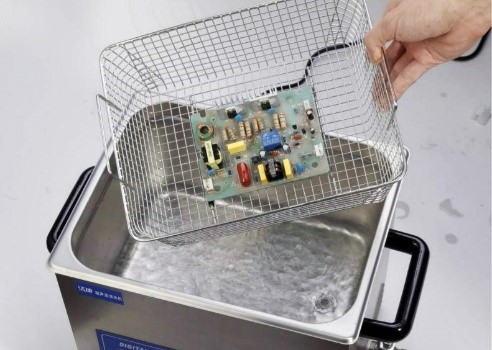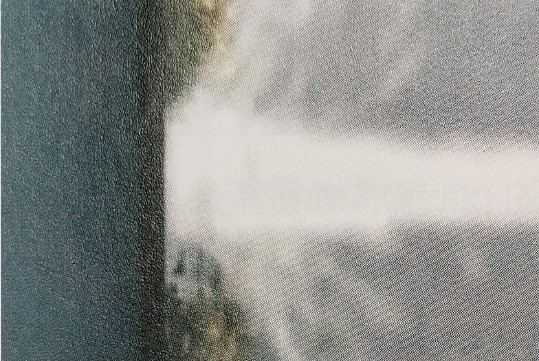Common PCBA cleaning solution-Shenzhen Fitech

Common PCBA cleaning solution
After soldering, PCBAs need to be cleaned to remove solder dross, flux, dust and other contaminants from the board to improve its reliability and performance. Current PCBA cleaning solutions are in full bloom, each cleaning solution in different application scenarios to show the unique advantages, this article will introduce the common PCBA cleaning solutions.
Manual immersion cleaning
Manual immersion cleaning refers to a cleaning method in which the PCBA is immersed in a cleaning solution and the contaminants are allowed to dissolve or fall off naturally. This cleaning method has low cleaning efficiency and cannot ensure that the ionic residue concentration is qualified.
Ultrasonic cleaning
Ultrasonic cleaning involves placing the PCBA in a cleaning solution which attacks the foreign matter left on the PCBA board under the action of an ultrasonic oscillator so that it falls off the PCBA board. The cleaning solution is heated during ultrasonic cleaning, which helps to dissolve the rosin and resin residues.

Fig. 1. Ultrasonic cleaning machine
Surge cleaning
Surge cleaning and spray cleaning are both water-based cleaning agents based on a large-scale cleaning process. Surge cleaning is the sample to be cleaned is placed in the surging cleaning fluid, relying on the flow of water to clean the surface residues of the sample.
It is characterised by a gentle physical excitation and a low force on the device, which does not damage the sample. It can be used for cleaning samples with fragile parts. For this reason, the cleaning power of the surge cleaning is weak and suitable for wafer and IC package processes, but less suitable for PCBA product cleaning.
Spray cleaning
Spray cleaning is the most widely used mode in the industry for high volume production. There are two types of equipment: in-line and off-line.
The offline spray cleaning machine, also known as the Batch model, is used to place the sample parts to be cleaned in batches into the machine, which has two tanks: a cleaning tank + a rinsing and drying tank. The washing tank is heated and the heated cleaning solution is sprayed onto the surface of the sample by means of a pump to complete the cleaning. The rinsing tank sprays DI water directly onto the surface of the cleaned sample and can be heated to dry the sample after rinsing. The off-line spray cleaning equipment has a complete cleaning + rinsing + drying function.
The in-line spray washing machine is suitable for mass production operations and is a fully automatic cleaning solution.
Centrifugal cleaning
Centrifugal cleaning is a cleaning method that uses centrifugal force to shake out the residues from the cleaned PCBA surface. The PCBA is placed into a rotating cylinder cleaning machine and then sprayed with cleaning fluid, through high speed rotation, the residues and impurities on the surface of the PCBA are taken away.
Centrifugal cleaning is used in the early days of wafer cleaning and IC packaging cleaning process, wafer thickness size is very small, not suitable for ultrasonic cleaning and spray cleaning. flipchip device bump size from 50μm to 25μm, die through such size bump welding in the packaging substrate, in the silver paste before potting need to be thoroughly cleaned. The micrometer gap is not conducive to cleaning fluid entry and a centrifugal cleaner can effectively assist the cleaning fluid to pass through the micro gap to complete the cleaning. The centrifugal cleaning process has considerable advantages in the ultra-micro gap cleaning process and is used for flip chip packaging processes, bottom filler pre-treatment processes, etc.
Dry ice cleaning
Dry ice cleaning is a new environmentally friendly cleaning solution that has been developed in recent years. Liquid cleaning always generates waste liquids, whether organic solvents or water-based cleaners, and there is always the problem of waste disposal. Another problem is that when cleaning a product partially, solvent-based cleaning is difficult to protect the surrounding area from the device, and so dry ice cleaning technology was born. Dry ice cleaning technology is a use of compressed air to dry ice particles blasted to the surface of the PCBA to be cleaned, the residue from the adhesion surface to peel off and leave with the vaporized dry ice to achieve the effect of cleaning.

Figure 2. Dry ice particle beams impacting PCBA surface residues

















 Back to list
Back to list



